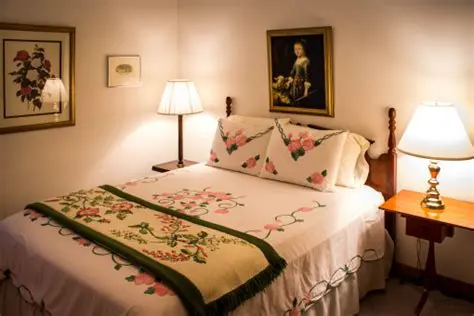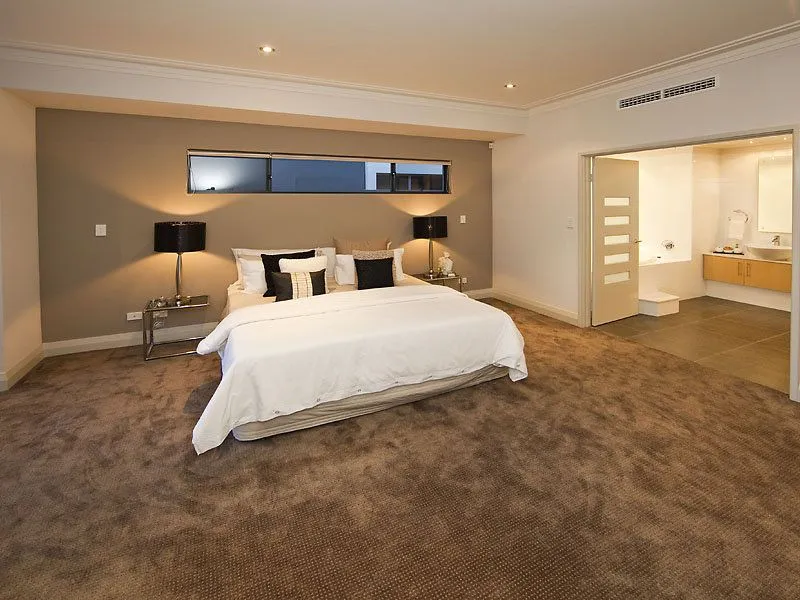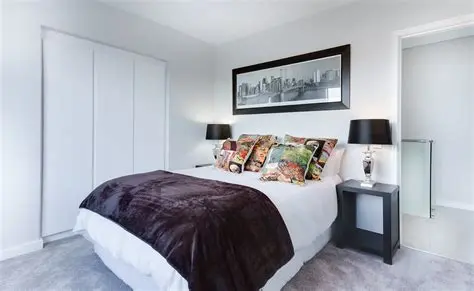Basement Bliss: Live with comfort and ease


Are you looking to renovate your basement or add value to your home? One innovative strategy to consider is utilizing the basement as a bedroom. This often-neglected area can be transformed into a comfortable and functional living space with a bit of creativity and planning. However, to ensure a successful and efficient project, a highly professional and detail-oriented approach is necessary. In this article, we’ll explore the key factors to consider when turning your basement into a bedroom, including safety, outlet installation, insulation, lighting, ventilation, flooring, electrical requirements, soundproofing, plumbing, storage, layout and design, permit codes and regulations, and top-quality products. We’ll also discuss the tools and materials you’ll need to make your project a success. Whether you’re a homeowner, real estate investor, remodeling contractor, architect, or home staging professional, read on to discover how to turn your basement into a beautiful and functional bedroom.
How To Begin?
To begin developing a basement bedroom when you have no idea how to move forward, start by setting clear goals for the space, assessing the existing space, researching design ideas, hiring a professional if needed, creating a budget, planning the layout using 3D modeling software, and starting construction. By following these steps, you can create a basement bedroom that meets your goals, fits your budget, and is comfortable and functional.
Decide Who the Bedroom Is Intended For:
When developing a basement bedroom, it’s important to consider who the bedroom is intended for. Factors to consider include age, gender, family or guest use, purpose, and personal preferences. By taking into account these factors, you can create a space that is functional, comfortable, and personalized. By considering the intended user, you can make design decisions that meet their needs and preferences.
Making 3D Models:
Using 3D models for planning and developing a basement bedroom provides several advantages, including visualization, accuracy, cost-effectiveness, time-saving, and collaboration. 3D modules allow you to see the final product before starting construction, make accurate measurements, and avoid costly mistakes during construction. They can save time, money, and help facilitate collaboration with contractors and designers.
Basement Finishing Cost Calculator
Start the Planning:
Here are some steps to start planning for developing a basement bedroom:
- Determine the Legal Requirements: Before starting any work, it’s essential to check the local building codes and regulations to ensure that you comply with all the legal requirements for developing a basement bedroom. Some cities or municipalities may have specific requirements regarding the ceiling height, egress windows, and fire safety.
- Inspect the Basement: Conduct a thorough inspection of the basement to identify any moisture or water problems, cracks in the foundation, or signs of mold growth. It’s essential to address these issues before beginning the development process.
- Plan the Layout: Plan the layout of the bedroom, including the location of doors, windows, and any built-in storage or closet space. Consider the size and sharing fixtures, flooring, electrical, plumbing, and soundproofing materials.
- Finishing: We add the finishing touches, such as paint, trim, and design elements, to create a personalized and inviting space.
- Inspection: We conduct a final inspection to ensure that the project meets all safety and quality standards.
- Cleanup: We leave your space clean and ready to use, with all debris and construction materials removed.
Things to keep with you when designing a basement bedroom:
When developing a bedroom in a basement, there are several tools that can be considered to ensure a successful and efficient project. Some of these tools include:
- Power tools: Power tools such as a drill, circular saw, jigsaw, or reciprocating saw can be used for cutting, drilling, and fastening.
- Hand tools: Hand tools such as a hammer, screwdriver, level, measuring tape, or pliers can be used for precise and accurate work.
- Safety gear: Safety gear such as safety glasses, work gloves, earplugs, or a respirator can be used to protect workers from hazards and ensure a safe work environment
- Paint tools: Paint tools such as a roller, paintbrush, or paint sprayer can be used for finishing surfaces.
- Demolition tools: Demolition tools such as a sledgehammer or pry bar can be used for removing old structures or materials.
- Lighting tools: Lighting tools such as a flashlight or work light can be used to provide adequate lighting in the workspace.
- Moisture detection tools: Moisture detection tools such as a moisture meter or infrared camera can be used to detect moisture problems and prevent mold growth.
The Resources that we offer:
When developing a basement bedroom, we use a variety of resources to ensure a successful and efficient project. Some of these resources includes:
- Building codes and regulations: It is important to research and comply with local building codes and regulations, including permits, inspections, and safety requirements.
- Architectural and engineering plans: Detailed plans, including architectural and engineering drawings, can ensure the design and construction of a safe and functional living space.
- Contractor and subcontractor services: Hiring experienced contractors and subcontractors can ensure high-quality workmanship and reduce the risk of errors or delays.
- Building materials and supplies: Quality building materials and supplies, such as lumber, drywall, insulation, and plumbing and electrical materials, can ensure durability, safety, and energy efficiency.
- Design software and tools: Design software and tools, such as AutoCAD or Sketch Up, can help visualize and plan the space, as well as identify potential design issues before construction.
- Professional associations and certifications: Professional associations and certifications, such as the National Association of Home Builders or LEED certification, can provide access to industry standards, best practices, and networking opportunities.
Basement Bedroom Ideas
Basement bedrooms can be a valuable addition to any home, providing a private and comfortable space for family members or guests. However, designing a basement bedroom can be a challenge due to factors such as limited natural light, potential moisture issues, and lower ceilings. In this article, we will explore some basement bedroom ideas that can help transform your space into a cozy and inviting retreat.

Multipurpose Space
If you’re tight on space, consider designing a multipurpose basement bedroom that can serve as a guest room, home office, or even a workout room. By incorporating versatile furniture and storage solutions, you can make the most of your space.


Your Dream Basement Projects starts from here : Ignite your options with our complementary quotation
Styling Ideas
Once you have the basics of your basement bedroom design in place, it’s time to add some finishing touches. Consider incorporating cozy and comfortable elements such as plush bedding, warm lighting, and soft textiles, while also utilizing storage solutions, adding artwork and decorative accents to the walls, and choosing a cohesive color scheme that complements the space. Additionally, adding greenery or plants can bring life to the room and make it feel more inviting.
Basement Bedroom Exit Ideas
If you have a walk-out basement, consider designing a bedroom that offers direct access to the outdoors and natural light. Adding large windows or glass doors, outdoor seating, comfortable furniture, storage solutions, and decorative accents such as artwork or rugs can help create a seamless transition between indoors and outdoors.
Bedroom Flooring Ideas
When it comes to basement bedroom flooring ideas, it is essential to choose options that are durable and moisture-resistant. Vinyl, laminate, or tile are all excellent choices. Carpeting can also be a cozy and comfortable option, but make sure it has a moisture-resistant backing. Another option is to use stained or polished concrete for an industrial-chic look. Additionally, adding a rug to the flooring can add warmth and softness to the space.
Bedroom Wall Ideas
Basement bedroom wall ideas are limitless. Painting walls in neutral colors, adding an accent wall with bold colors or textured wallpaper, incorporating artwork or decorative accents, exposing brick or concrete for an industrial look, and adding wood paneling or shiplap for a cozy feel are all great options.
Luxurious Ideas for Basement Bedroom
If you’re looking to create a more luxurious basement bedroom, consider adding heated floors, soundproofing, smart lighting, a home theater system, built-in shelving, a spa-like bathroom
Professional Tips for designing a basement bedroom:
When developing a basement bedroom, consider addressing moisture issues, installing proper insulation, choosing egress windows, incorporating natural light, considering ceiling height, adding soundproofing, planning for storage, choosing durable flooring, installing proper lighting, and considering a separate entrance.
Contact Us
At SAWW Solutions, customer satisfaction is our top priority. We are committed to delivering high-quality results that meet or exceed your expectations. We pride ourselves on our attention to detail, professionalism, and communication throughout the entire process. We guarantee our workmanship and strive to provide excellent customer service every step of the way.
If you are interested in developing a basement bedroom, please contact us today to schedule a consultation. Our team of experts is ready to help you transform your space into a safe, comfortable, and functional living area that you and your family can enjoy for years to come.
FAQs
Why should I consider developing my basement into a bedroom?
Converting your basement into a bedroom can increase your living space and the value of your home. It can also be a cost-effective way to add a bedroom without building an addition to your home.
What are some key considerations when developing a basement bedroom?
Safety, proper insulation, lighting, ventilation, flooring, electrical requirements, soundproofing, plumbing, storage, layout, and design are all important considerations when developing a basement bedroom.
How can I ensure my basement bedroom is safe?
Ensure that the basement is structurally sound and free from any safety hazards that could cause injury, such as water damage or mold. Install proper egress windows or doors for emergency escape and ensure compliance with local building codes.
How can I regulate the temperature in my basement bedroom?
Proper insulation is crucial for regulating temperature and preventing moisture buildup. Fiberglass batts, foam board insulation, or blown-in cellulose insulation are commonly used products for this purpose.
What type of flooring is suitable for a basement bedroom?
Durable and suitable flooring materials, such as carpet, hardwood, or laminate, should be chosen to withstand foot traffic and support furniture.
How can I ensure adequate lighting in my basement bedroom?
Lighting fixtures, such as those made by Philips or GE, can be used to provide ample lighting for the space, both natural and artificial.
Do I need to consider soundproofing in my basement bedroom?
Soundproofing can be important to minimize noise from upstairs and the rest of the house. Soundproofing materials such as acoustic panels or mass loaded vinyl, made by Aura Lex or Green Glue, can be used.
What tools do I need for developing a basement bedroom?
Power tools such as a drill, circular saw, jigsaw, or reciprocating saw can be used for cutting, drilling, and fastening. Hand tools such as a hammer, screwdriver, level, measuring tape, or pliers can also be used for precise and accurate work. Safety gear such as safety glasses, work gloves, earplugs.
